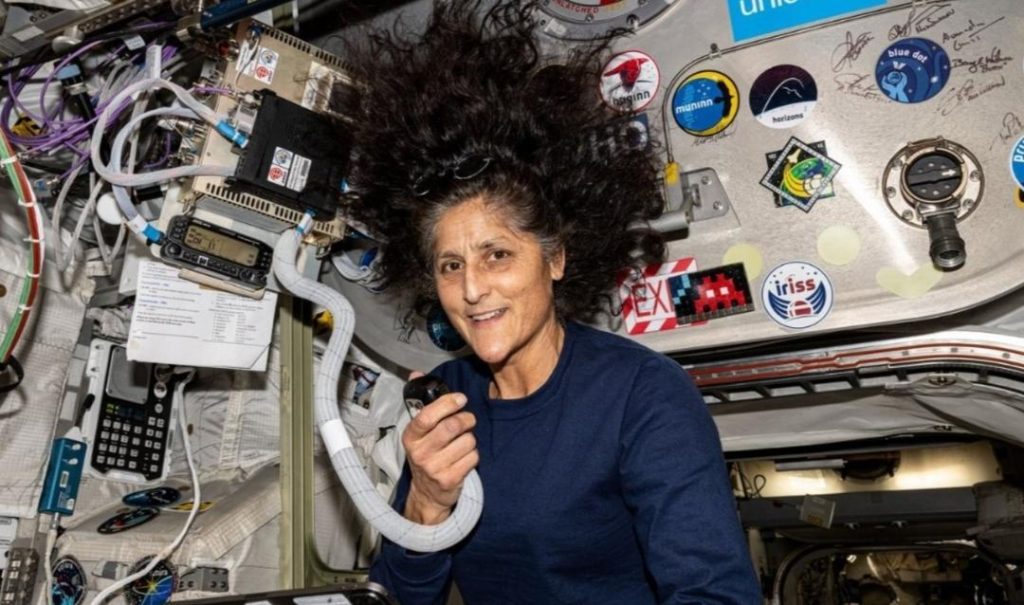
What Scientific Milestones Were Achieved by Williams & Her Team?
The International Space Station (ISS) has been a hub for groundbreaking scientific research since its inception. In recent years, the crew stationed on the ISS has made significant contributions to various fields of science, from plant biology to medical innovation. In this blog post, we’ll delve into the notable scientific milestones achieved by Sunita Williams and her team during their expedition on the ISS.
NASA recently published a list of scientific milestones achieved by the crew, consisting of astronauts Nick Hague, Butch Wilmore, Sunita Williams, and cosmonaut Aleksandr Gorbunov. The crew’s research endeavors were focused on several plant-related studies, with a primary objective of understanding how plants grow and adapt in microgravity. The results of these experiments have far-reaching implications for the development of sustainable agriculture in space and on Earth.
One of the most impressive feats of the crew was the extensive photography project undertaken by Butch Wilmore. During their stay on the ISS, Wilmore captured thousands of images of Earth, providing a unique perspective on urban growth, climate change, and natural disasters. These photographs offer a new vantage point to study the Earth’s surface, allowing scientists to better understand the complexities of our planet.
In addition to these plant-related studies and photography projects, the crew also conducted experiments on 3D printing of implantable medical devices in microgravity. This research has significant implications for the development of innovative medical treatments, as 3D printing technology offers a new means of creating customized implants and prosthetics.
Plant-Related Studies
The ISS has been a hub for plant research since the early days of space exploration. Astronauts have grown a variety of crops, including lettuce, radishes, and even flowers, to study how plants adapt to microgravity. The results of these experiments have shown that plants can grow and thrive in space, with some species even displaying unique characteristics that are not seen on Earth.
During their expedition, Sunita Williams and her team focused on several plant-related studies, including the effects of microgravity on plant growth and development. One of the key objectives of these experiments was to understand how plants respond to changes in their environment, such as altered gravity and radiation levels.
The crew also conducted experiments on the effects of microgravity on plant water uptake and transport. These studies have shown that plants in microgravity exhibit altered water uptake patterns, which could have significant implications for the development of sustainable agriculture in space.
3D Printing of Implantable Medical Devices
The crew’s experiment on 3D printing of implantable medical devices in microgravity was a significant milestone in the field of medical innovation. The study was conducted in collaboration with NASA’s Jet Propulsion Laboratory and the University of California, Los Angeles.
The researchers used a 3D printer on the ISS to create customized implants and prosthetics, which were then tested for their durability and effectiveness. The results of the study showed that 3D printing technology can be used to create high-quality implants and prosthetics in microgravity, which could revolutionize the field of medical treatment.
Conclusion
The scientific milestones achieved by Sunita Williams and her team during their expedition on the ISS are a testament to the importance of space exploration and research. The crew’s work on plant-related studies and 3D printing of implantable medical devices has significant implications for the development of sustainable agriculture in space and on Earth, as well as innovative medical treatments.
As we continue to push the boundaries of space exploration, it’s essential that we prioritize scientific research and innovation. The achievements of Sunita Williams and her team serve as a reminder of the incredible feats that can be accomplished when scientists, engineers, and astronauts work together towards a common goal.
Source:






